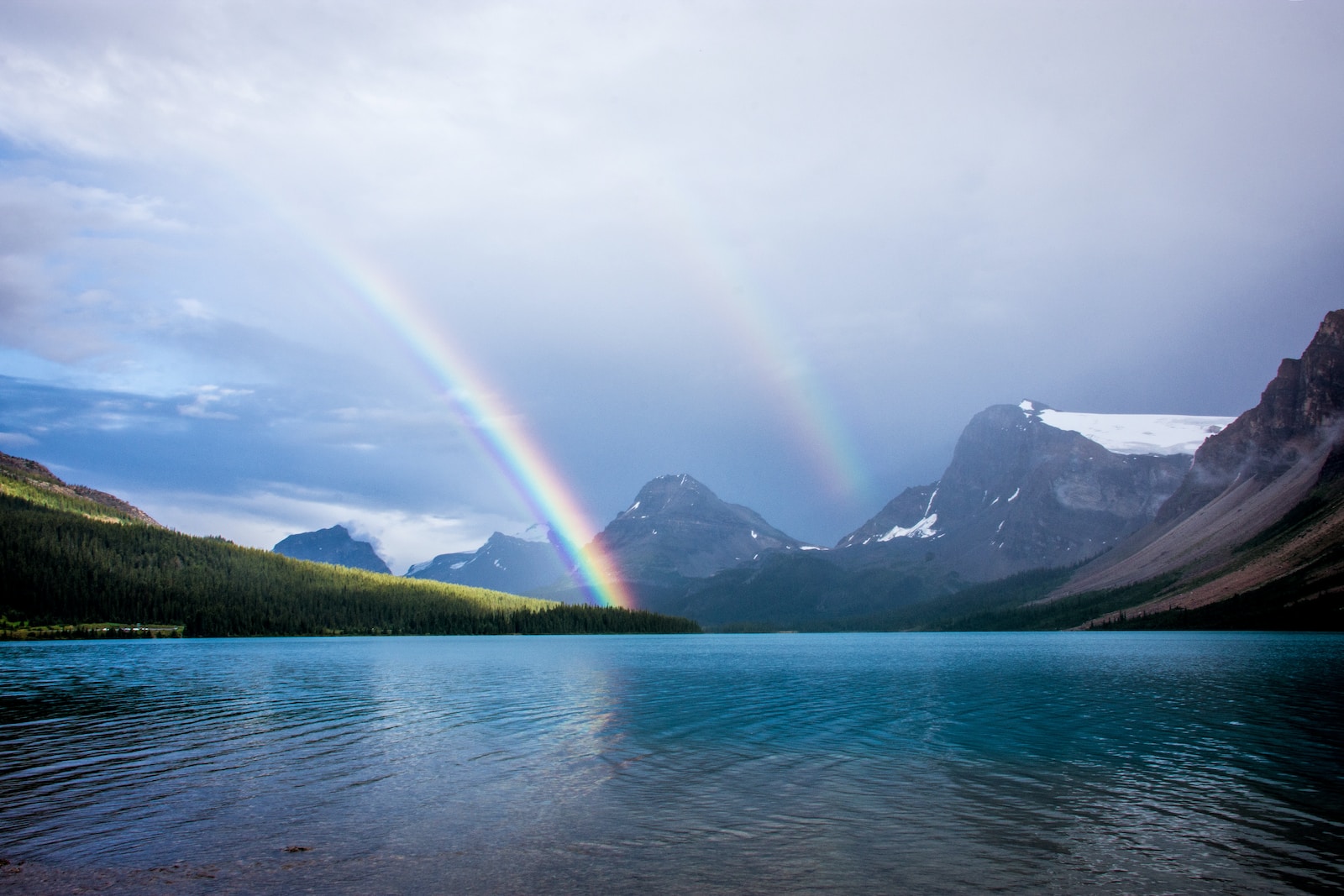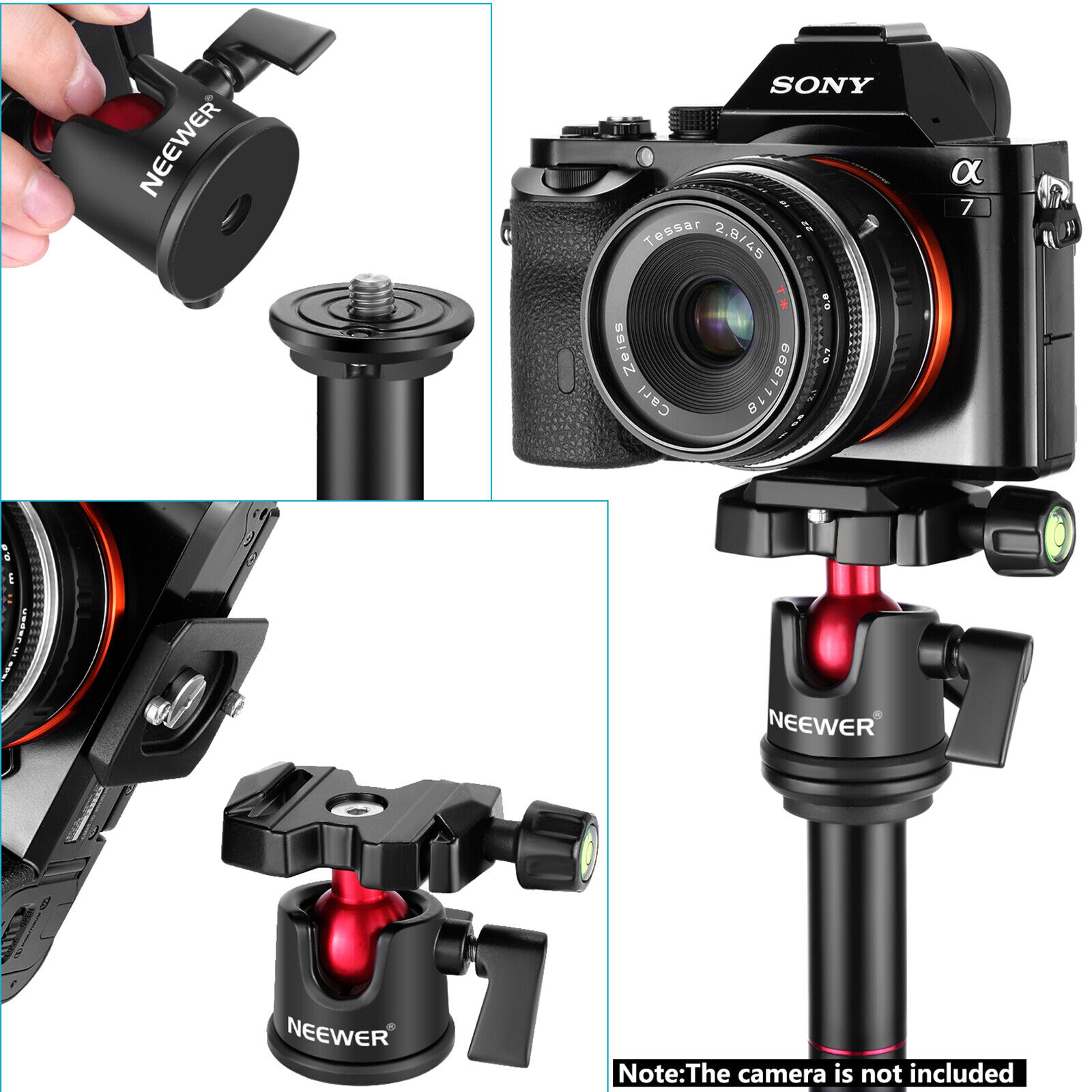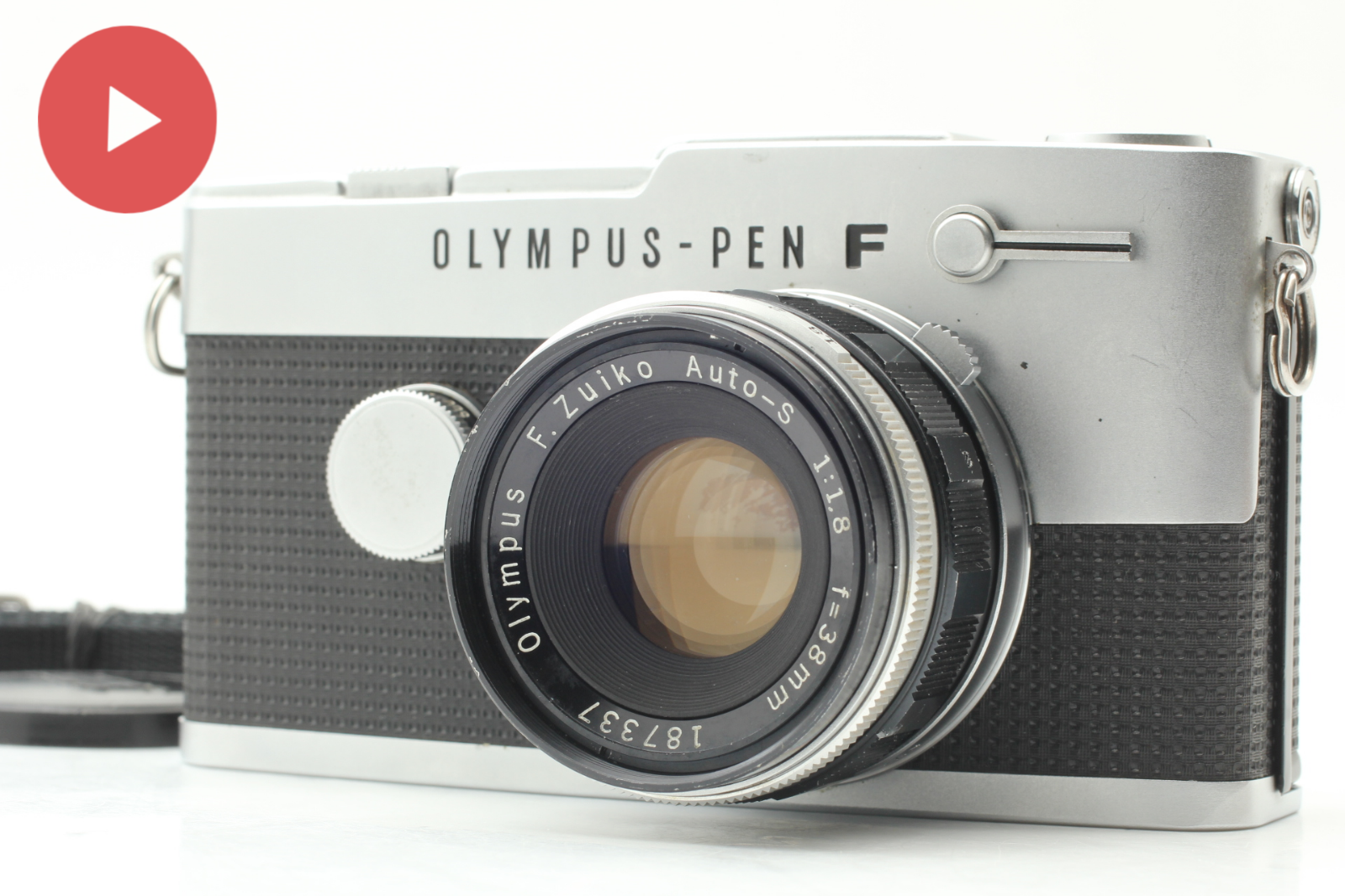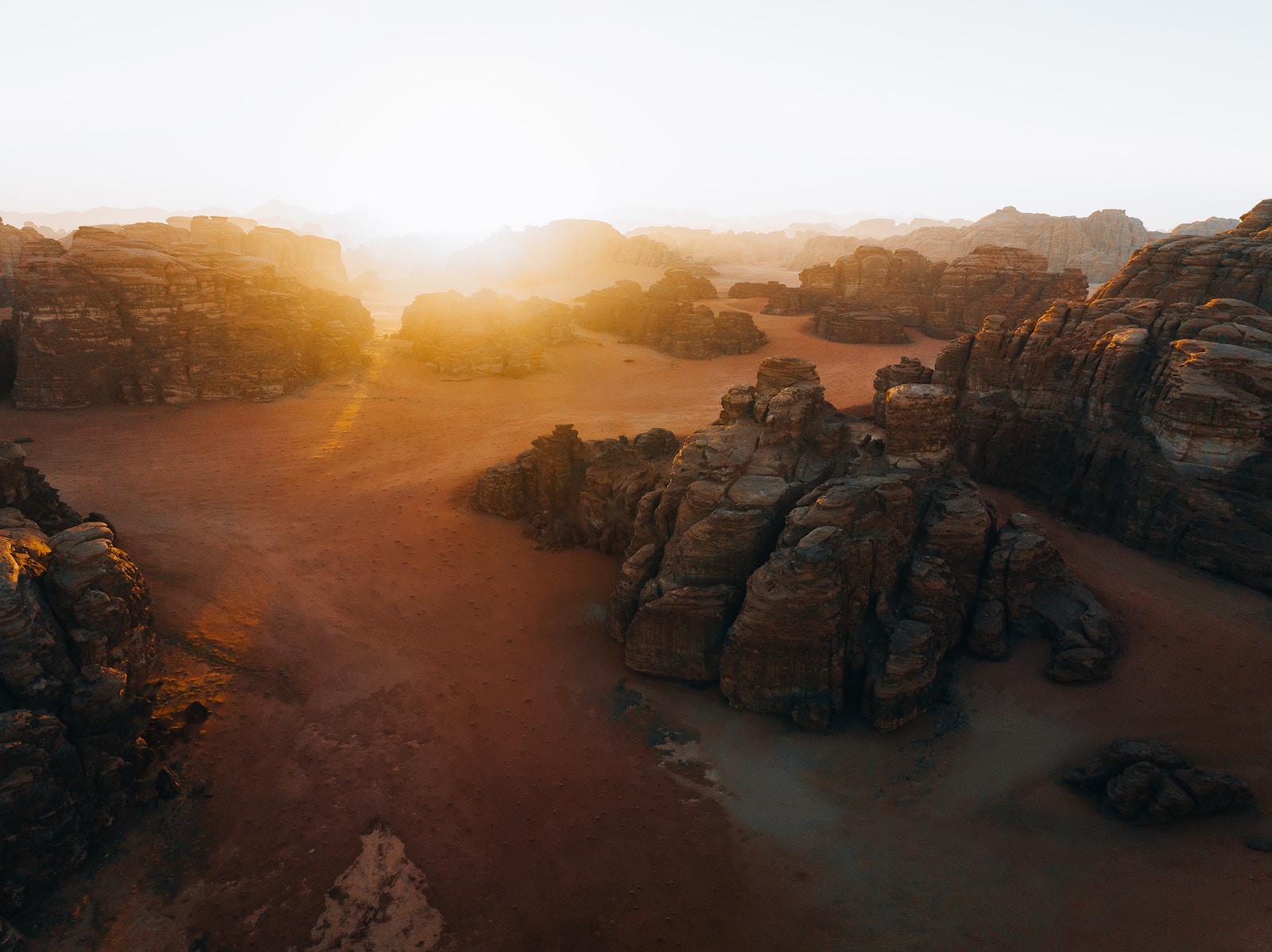Welcome to Nature’s Masterpiece: Capturing Rainbows, where we delve into the magical world of weather photography. Brace yourself for a captivating adventure as we explore the mesmerizing phenomenon of rainbows and the art of capturing them through the lens. With a focus on understanding light refraction, mastering camera settings, and perfect timing, this blog is your ultimate guide to transforming bland landscapes into vibrant spectacles of color. Get ready to immerse yourself in the spellbinding beauty of nature and discover the secrets to capturing rainbows like a pro.
Table of Contents
- Colors in the Sky: The Spectacular World of Rainbows
- The Magic of Rainbows: Capturing Nature’s Masterpiece
- Capturing Rainbows: Finding the Perfect Vantage Point
- Frequently Asked Questions
- 1. How does light refraction create a rainbow?
- 2. What camera settings work best for capturing rainbows?
- 3. What is the best time of day to photograph rainbows?
- 4. How can I enhance the colors of a rainbow in my photographs?
- 5. Can I capture a rainbow using a smartphone camera?
- 6. How can I include a rainbow in landscape photography?
- 7. What other weather photography opportunities can I explore?
- 8. Where can I find more photography tips?
- 9. How can I improve my timing to capture rainbows?
- 10. Are rainbows only visible after rain?
- Wrap Up
Colors in the Sky: The Spectacular World of Rainbows
When it comes to capturing nature’s most enchanting miracles, few phenomena can compete with the beauty and magic of rainbows. These stunning displays of colors in the sky have fascinated humans for centuries, and for good reason. In this article, we will delve into the captivating world of rainbows, understanding their formation, and uncovering the secrets to capturing them in all their glory through the lens of your camera.
The Science behind Rainbows
Before diving into the photography techniques, it’s essential to understand the science behind rainbows. In simple terms, rainbows occur when sunlight is refracted, or bent, and then reflected inside water droplets in the air, creating a spectrum of colors. The process of refraction breaks down the white light into its constituent colors—red, orange, yellow, green, blue, indigo, and violet—and sends these colors bouncing back towards the observer.
Now, armed with this knowledge, let’s explore some key techniques to capture rainbows in all their sprawling majesty.
Timing and Location: Chasing Rainbows
One crucial factor in photographing rainbows is timing. Rainbows typically appear when the sun is low in the sky, often shortly after rain showers. This makes early morning or late afternoon the perfect time to capture the awe-inspiring beauty of these multicolored arcs. Planning ahead and monitoring weather forecasts can significantly increase your chances of spotting rainbows.
Another crucial aspect is finding the perfect location. Look for areas with unobstructed views, such as open fields, beaches, or mountainsides. These landscapes not only provide a stunning backdrop for your rainbow shots but also allow the light to interact with the surroundings, creating a harmonious composition that enhances the overall impact of your photographs.
- Choose a location with a strong foreground element, such as a colorful flower field or a cascading waterfall, to add depth and interest to your composition.
- Consider using a wide-angle lens to capture the entire arc of the rainbow and the surrounding scenic beauty.
- Experiment with different angles and perspectives to find unique compositions that highlight the dynamic nature of rainbows.
By being in the right place at the right time and carefully considering your composition, you can elevate your rainbow photographs from ordinary to extraordinary.
Now that we have covered the basics of timing and location let’s move on to the technical aspects of capturing rainbows through your lens.
Did you know that rainbows are actually full circles of color, but we only see a half-circle because the ground blocks the bottom half?
The Magic of Rainbows: Capturing Nature’s Masterpiece
Rainbows are one of nature’s most striking visual spectacles, captivating our senses with their vibrant colors and elusive beauty. As a photographer, capturing the essence of these mesmerizing arcs of light can be a rewarding and challenging endeavor. In this section, we will explore the equipment needed to capture the perfect rainbow shot, including cameras, lenses, and additional gear to enhance your weather photography adventures.
Camera Options for Capturing Rainbows
When it comes to choosing a camera for rainbow photography, there are several options to consider. These range from entry-level DSLRs to advanced mirrorless cameras, each offering unique benefits for capturing these natural wonders.
If you’re just starting out or on a tight budget, an entry-level DSLR such as the Canon EOS Rebel T7 or the Nikon D3500 can be great options. These cameras offer excellent image quality, user-friendly interfaces, and interchangeable lenses, allowing you to experiment with different focal lengths to compose your rainbow shots.
For more advanced photographers seeking higher resolution and advanced features, mirrorless cameras like the Sony Alpha a7 III or the Fujifilm X-T4 can be excellent choices. These cameras offer superb image quality, lightning-fast autofocus, and superior low-light performance, ensuring you don’t miss a single moment of rainbow magic.
The Perfect Lens for Rainbow Photography
Choosing the right lens is crucial for capturing the intricate details and vibrant colors of rainbows. Here are some lens options that can elevate your rainbow photography:
- Wide-Angle Lens: A wide-angle lens, such as a 16-35mm or 24-70mm, allows you to capture the entire arc of the rainbow along with its surrounding landscape. This lens is ideal for landscape photography and can provide a sense of scale and depth to your rainbow shots.
- Telephoto Lens: A telephoto lens, such as a 70-200mm or 100-400mm, allows you to zoom in on specific sections of the rainbow, emphasizing its colors and patterns. This lens is especially useful when there are obstacles, such as buildings or trees, that obstruct the entire rainbow.
- Macro Lens: A macro lens, such as a 100mm or 105mm, enables you to capture the delicate details of raindrops or tiny rainbows within a larger scene. This lens is perfect for close-up shots, showcasing the intricacies of nature’s masterpiece.
- Lens Filters: Consider using a polarizing filter to reduce glare and enhance colors, or a neutral density filter to control the amount of light entering the camera, allowing for longer exposures and smoother rainbow gradients.
Remember, the choice of camera and lens ultimately depends on your style, budget, and the specific shots you wish to capture. What’s important is to master your gear and adapt it to the ever-changing conditions presented by these unique weather phenomena.
By understanding the capabilities of different cameras and lenses, you can equip yourself with the necessary tools to capture stunning rainbow photographs and create works of art that showcase nature’s brilliance.
In the next sections, we will delve deeper into the technical aspects of photographing rainbows, including understanding light refraction, optimizing camera settings, and the importance of perfect timing.
Capturing Rainbows: Finding the Perfect Vantage Point
Rainbows are nature’s vibrant masterpiece, captivating photographers with their vivid colors and ethereal beauty. To capture the perfect rainbow photograph, one must understand the science of light refraction and position themselves in the ideal vantage point. In this article, we will explore the best time of year to photograph rainbows and provide insights into the perfect positions for photographers to capture these magnificent spectacles.
The Best Time of Year for Rainbow Photography
While rainbows can occur throughout the year, certain weather conditions enhance the likelihood of witnessing this breathtaking phenomenon. The ideal time to capture rainbows is during the transitional seasons of spring and autumn when the sun is lower in the sky. During these seasons, rain showers and clearing skies frequently create the perfect conditions for rainbows to form.
Additionally, it is important to assess the time of day when planning your rainbow photography session. Capturing rainbows in the early morning or late afternoon is favorable, as the sun’s angle creates a desirable low elevation, allowing for more vibrant and expansive rainbows. Moreover, the gentle sunlight during these hours provides softer, more flattering lighting on the landscape.
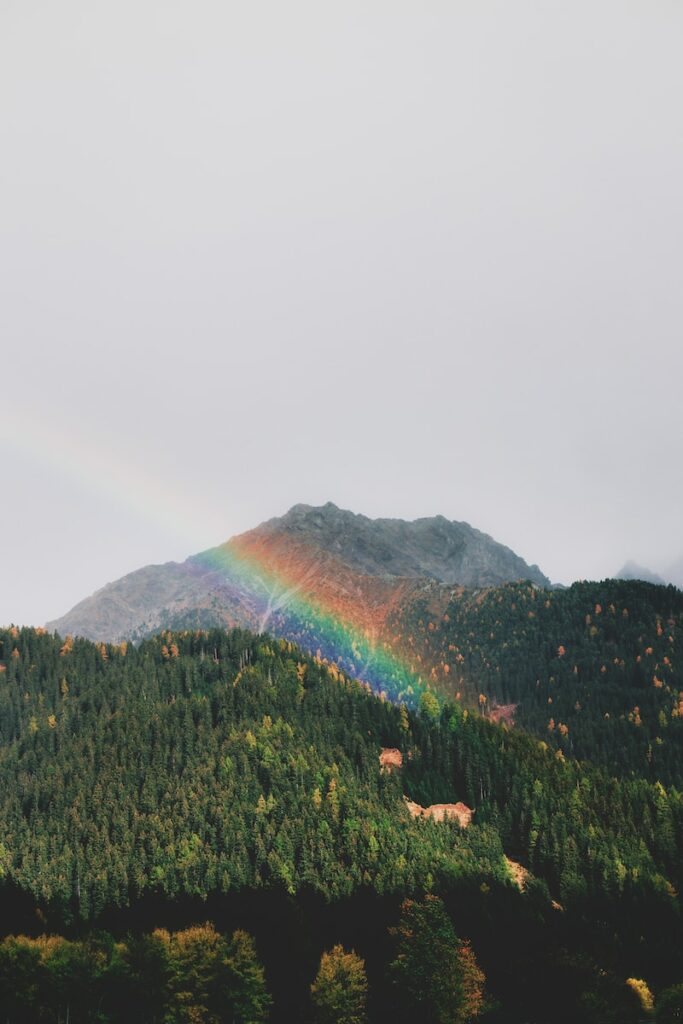
Finding the Perfect Vantage Points to Enhance your Rainbow Photographs
Choosing the right vantage point is crucial for capturing breathtaking rainbow photographs. Here are three options to consider, each offering unique benefits:
- High Elevation Points: For sweeping panoramic shots of rainbows suspended across the sky, find high elevation vantage points. Mountains, hills, or tall buildings provide the necessary height to capture the full arc of the rainbow against a breathtaking backdrop. This perspective adds depth and grandeur to your photograph, making it a truly awe-inspiring visual experience.
- Water Reflections: Another captivating approach involves positioning yourself near bodies of water such as lakes, rivers, or even puddles. The still water surface acts as a mirror, reflecting the rainbow and creating a stunning double image. This technique adds a touch of magic and complexity to your photograph, intensifying its visual impact.
- Foreground Elements: To add interest and context to your rainbow photographs, consider incorporating distinct foreground elements. Trees, rocks, or buildings provide a sense of scale and depth, creating a captivating composition. By including these elements, you can evoke a stronger emotional connection between the viewer and the mesmerizing beauty of the rainbow.
Remember, patience and careful observation are key when hunting for the perfect vantage point. Experimenting with different locations and angles will allow you to develop a unique style and capture extraordinary rainbow photographs.
So, get out there and immerse yourself in nature’s magical display of color. Understand the science, identify the best time of year, and position yourself in the perfect vantage point. By unlocking the secrets of capturing rainbows, you can craft photographic masterpieces that will leave viewers in awe.
One helpful tip for capturing rainbow photographs is to use a polarizing filter on your camera lens. This filter helps to reduce glare and increase color saturation, making the rainbow appear even more vibrant in your photos.
Frequently Asked Questions
1. How does light refraction create a rainbow?
When sunlight passes through rain droplets in the air, it gets refracted or bent. The different colors of light are separated and spread out, forming a circle of colors known as a rainbow.
2. What camera settings work best for capturing rainbows?
To capture vibrant and detailed rainbows, use a wide-angle lens and set your camera to a low ISO for less noise. Adjust the aperture to a small f-number (e.g., f/8 or f/11) for a sharper image. Experiment with different shutter speeds to capture the movement of rainbows.
3. What is the best time of day to photograph rainbows?
Rainbows are most commonly seen during the late afternoon to early evening when the sun is lower in the sky. Look for rainbows after a rain shower or when there are water droplets in the air. The angle between the sun, you, and the rain droplets is crucial for capturing a rainbow.
4. How can I enhance the colors of a rainbow in my photographs?
To enhance the colors of a rainbow in your photographs, pay attention to the composition. Look for a darker or contrasting background to make the rainbow colors pop. Adjust the white balance settings on your camera to bring out the natural hues of the rainbow.
5. Can I capture a rainbow using a smartphone camera?
Absolutely! Many smartphones today have advanced camera technology. To capture a rainbow effectively using a smartphone, follow the same principles as with a DSLR camera: find the right angle, adjust exposure settings, and use editing apps to enhance the colors if needed.
6. How can I include a rainbow in landscape photography?
Incorporating a rainbow into your landscape photography can create stunning and magical scenes. Look for interesting foreground elements to pair with the rainbow, such as mountains, trees, or bodies of water. Use the rule of thirds to compose the shot and capture the rainbow in all its glory.
7. What other weather photography opportunities can I explore?
The world of weather photography is vast and offers incredible opportunities. Some other weather-related subjects to explore include lightning, storm clouds, fog, sunrise/sunset, and snowfall. Each type of weather brings its unique elements and challenges, making it an exciting genre to delve into.
8. Where can I find more photography tips?
For more photography tips and techniques, consider joining online photography communities, following photography blogs and social media accounts, and attending workshops or courses. Sharing experiences and learning from fellow photographers is a fantastic way to grow your skills and knowledge.
9. How can I improve my timing to capture rainbows?
Timing is crucial when it comes to capturing rainbows. Keep an eye on weather forecasts and be prepared to go out photographing after rain showers or during periods of light rain. Being patient and persistent will increase your chances of capturing rainbows under the perfect lighting conditions.
10. Are rainbows only visible after rain?
Rainbows are commonly seen after rain showers due to the presence of water droplets in the air. However, rainbows can also appear in other situations, such as mist or spray near waterfalls, fountains, or even garden hoses. Look for any source of water particles and sunlight to potentially spot a rainbow.
Wrap Up
In conclusion, capturing rainbows requires a combination of technical knowledge, patience, and a keen eye for the perfect moment. By understanding the science behind light refraction, adjusting your camera settings accordingly, and being prepared to seize the opportunity, you can create breathtaking nature photographs that truly showcase the beauty of rainbows.
Remember to always keep an eye on the weather forecast and plan your shoot accordingly. Set yourself up in a location that offers a captivating landscape as a backdrop, and be ready to capture that magical moment when the rainbow emerges.
We hope these tips and techniques have been helpful in your quest to capture nature’s masterpiece. We would love to hear about your experiences and see the incredible rainbow photos you’ve taken. Don’t hesitate to engage with us by leaving a comment below and sharing your thoughts!
Happy rainbow hunting!
